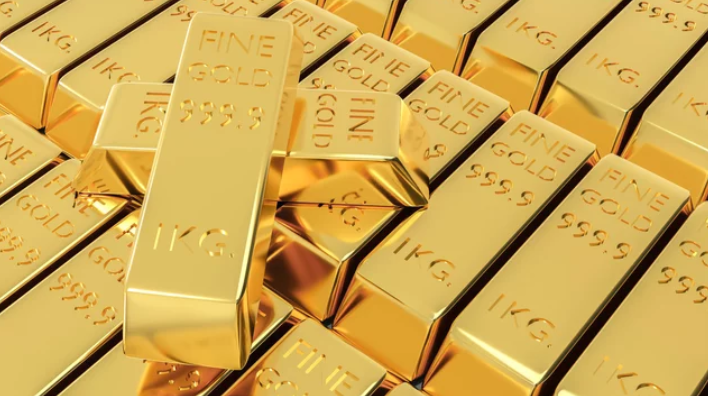Shining Through Time: Exploring the Beauty and Significance of Gold
Gold has been revered and cherished by humanity for thousands of years. This precious metal has captivated civilizations throughout history and holds a special place in the hearts of people around the world. From its intrinsic beauty and rarity to its diverse applications and cultural significance, gold has remained a symbol of wealth, power, and prestige, making it one of the most precious and sought-after metals on Earth.
One of the defining characteristics of gold is its timeless appeal. Gold has been used in jewelry, coins, and decorative objects for millennia, with its lustrous yellow hue and malleability making it a favored material for artistic expression. Gold jewelry has been worn by both men and women in various cultures as a form of personal adornment, symbolizing status, wealth, and beauty. From exquisite gold necklaces, earrings, bracelets, and rings to intricately crafted gold brooches, tiaras, and other pieces, gold jewelry has been treasured as a sign of opulence and elegance.
Gold is also known for its durability and resistance to tarnish or corrosion, making it an ideal metal for jewelry that can be passed down through generations as family heirlooms. Many ancient gold artifacts have been discovered in archaeological excavations, showcasing the longevity and enduring nature of gold.
Beyond its aesthetic appeal, gold also holds significant cultural and symbolic meanings. In many societies, gold has been associated with divinity, spirituality, and religious practices. It has been used in religious ceremonies, rituals, and sacred objects, symbolizing purity, enlightenment, and divine protection. In some cultures, gold is believed to bring good luck, prosperity, and blessings, and is often used in celebrations and auspicious occasions.
Gold also has a long history as a store of value and a form of currency. Throughout history, gold has been used as a medium of exchange and a unit of value, serving as a form of money in various civilizations. Gold coins were minted and used as legal tender in many ancient and modern societies, providing a stable and recognized form of currency that transcended borders and facilitated trade.
In addition to its cultural and monetary significance, gold has various practical applications. Gold’s unique properties, such as its high thermal and electrical conductivity, make it valuable in technology and industry. Gold is used in electronic devices, medical equipment, aerospace technology, and many other applications due to its exceptional properties and reliability.
The value of gold is also reflected in its role as an investment. Gold has been considered a safe-haven asset and a form of wealth preservation for centuries. It is often used as a hedge against inflation, currency fluctuations, and geopolitical uncertainties. Gold can be bought in the form of bullion bars, coins, and jewelry, and is traded on global commodity exchanges.
However, gold mining and extraction also come with social and environmental challenges. Gold mining can have significant environmental impacts, such as deforestation, habitat destruction, soil erosion, and water pollution. It can also have social consequences, including land disputes, labor issues, and human rights violations. Responsible mining practices, including sustainable mining methods and fair labor practices, are essential to mitigate these challenges and ensure that gold is sourced and produced in an ethical and sustainable manner.
Gold is much more than just a precious metal. It is a symbol of beauty, wealth, cultural significance, and enduring value. From its use in jewelry and artistic expression to its role as a form of currency and investment, gold has remained a timeless and coveted metal throughout history. While it presents social and environmental challenges, responsible mining practices and ethical sourcing are crucial to ensure that gold continues to shine as a precious metal with a lasting allure.
Gold Mining
Gold mining is the process of extracting gold from the Earth’s crust. Gold, a precious metal known for its rarity, beauty, and value, has been mined and used by humans for thousands of years for various purposes, including as currency, jewelry, and investment.
Gold mining can take various forms, from small-scale artisanal mining to large-scale industrial mining operations. The methods used for gold mining depend on the location, geological characteristics of the deposit, and scale of the operation. Some common methods of gold mining include:
Placer mining: Placer mining is the extraction of gold from alluvial deposits, which are deposits of sand and gravel in rivers, streams, or other bodies of water. Placer mining involves washing and separating gold particles from the surrounding materials using water and gravity. This method is commonly used in small-scale and artisanal mining operations.
Open-pit mining: Open-pit mining involves the excavation of large open pits or craters on the surface of the Earth to extract gold-bearing rock or ore. This method is used for large-scale mining operations and requires heavy machinery and equipment, including bulldozers, excavators, and trucks, to remove and transport the overburden (the soil and rock covering the gold deposit) and extract the gold-bearing ore.
Underground mining: Underground mining involves the extraction of gold from deep within the Earth’s crust. This method is used when the gold deposit is located at a significant depth below the surface and requires tunnels and shafts to access the deposit. Underground mining can be more complex and expensive than open-pit mining, requiring specialized equipment, ventilation systems, and safety measures.
Heap leaching: Heap leaching is a method used to extract gold from low-grade ores or ores that are not suitable for conventional mining methods. Crushed ore is piled in a heap on an impermeable pad, and a dilute cyanide solution is sprayed over the heap. The gold particles bond with the cyanide to form a soluble compound that can be easily collected and processed.
Gold mining can have both positive and negative environmental and social impacts. It can provide employment opportunities, economic benefits, and infrastructure development in local communities. However, it can also result in deforestation, habitat destruction, water pollution, and displacement of communities, as well as social and human rights issues related to labor practices, health and safety, and land rights.
Gold mining is regulated by various environmental and social standards and regulations in different countries and regions to mitigate its negative impacts and promote responsible mining practices. These may include environmental impact assessments, reclamation and rehabilitation plans, community engagement and benefit-sharing agreements, and compliance with labor and human rights standards.
In conclusion, gold mining is a significant global industry that involves the extraction of gold from the Earth’s crust using various methods. Gold mining has played a significant role in human history, providing a valuable resource for various purposes. However, it also has environmental, social, and economic implications that need to be carefully managed to ensure responsible and sustainable mining practices.
What is Karat?
Karat, often abbreviated as “kt” or “K,” is a unit of measurement used to indicate the purity of gold. It is commonly used in the context of gold jewelry and gold coins to specify the amount of pure gold present in a particular piece.
The term “karat” originated from the ancient practice of using carob tree seeds as a reference for weighing gold. These seeds were believed to have a consistent and uniform weight, which made them suitable for use as a standard of measurement. Over time, the term “carat” evolved into “karat” to avoid confusion with the term “carat” used to measure the weight of gemstones.
Karat is expressed as a percentage, with 24 karats representing pure gold or 100% gold. However, it is rare to find jewelry or coins made of pure gold due to its softness and malleability, which make it susceptible to scratches and deformation. Therefore, gold is often alloyed with other metals to increase its strength and durability.
Common karat values for gold jewelry and coins include 22K, 18K, 14K, and 10K. These karat values indicate the proportion of gold in the alloy. For example, 22K gold contains 22 parts of gold and 2 parts of other metals, making it 91.67% gold (22/24 * 100%). Similarly, 18K gold contains 18 parts of gold and 6 parts of other metals, making it 75% gold (18/24 * 100%), and so on.
The higher the karat value, the higher the gold content and the purer the gold. However, higher karat gold is also softer and more prone to scratches and wear, making it less suitable for certain types of jewelry that require durability, such as rings and bracelets. Lower karat gold, on the other hand, is more durable due to the higher proportion of other metals, but it has a lower gold content and may be less valuable.
When purchasing gold jewelry or coins, it’s important to understand the karat value and its implications on the gold content and durability of the piece. It’s also essential to buy from reputable sources and ensure that the gold is certified for its karat purity to ensure you are getting genuine gold jewelry or coins.
Gold as Jewelry
Gold has been used for jewelry for thousands of years, and its allure as a precious metal has remained steadfast throughout history. Gold jewelry holds a special place in many cultures and is treasured for its beauty, value, and symbolism. Let’s explore the significance of gold as jewelry.
Gold has a unique luster and color that sets it apart from other metals, making it highly desirable for jewelry. Its warm, yellow hue is often associated with wealth, luxury, and beauty. Gold jewelry can be crafted into various intricate designs, ranging from simple and elegant to ornate and elaborate, making it suitable for a wide range of styles and occasions.
One of the enduring qualities of gold jewelry is its value. Gold has been recognized as a precious metal for centuries and has been used as a form of currency and a store of value. Gold jewelry can hold significant intrinsic value due to its gold content, making it an investment and a form of wealth preservation. Gold jewelry can be passed down from generation to generation, serving as a tangible symbol of family heritage and wealth.
Gold jewelry also carries symbolic meanings and cultural significance. In many cultures, gold jewelry is worn as a symbol of prosperity, good fortune, and social status. It can also have religious or spiritual significance, used in religious ceremonies, festivals, and rituals. Gold jewelry is often given as a gift on special occasions such as weddings, anniversaries, and birthdays, representing love, affection, and commitment.
Furthermore, gold is known for its durability and resistance to tarnish and corrosion, making gold jewelry long-lasting and suitable for everyday wear. Gold is a relatively soft metal, but it can be alloyed with other metals to increase its strength and durability, making it suitable for different types of jewelry, including rings, earrings, necklaces, bracelets, and more.
In recent years, there has been a growing trend towards incorporating gold in contemporary and innovative jewelry designs. Gold can be combined with other precious and non-precious metals, gemstones, and even alternative materials to create unique and artistic jewelry pieces. Gold-plated or gold-filled jewelry, where a layer of gold is bonded to a base metal, has also gained popularity as a more affordable option while still offering the beauty and allure of gold.
When it comes to caring for gold jewelry, regular cleaning and proper storage can help maintain its luster and beauty. Gold jewelry should be stored in a cool, dry place and kept separately to prevent scratching or tangling. Cleaning gold jewelry with a soft cloth and mild detergent or using specialized gold jewelry cleaners can help remove dirt and restore its shine.
Gold has a timeless appeal as jewelry, cherished for its beauty, value, durability, and symbolism. Whether it’s a simple gold band, an intricate necklace, or a pair of elegant earrings, gold jewelry continues to captivate and adorn people around the world, representing love, wealth, heritage, and style.
Gold as Investment
Gold has been used as a form of investment for centuries, and its allure as a tangible and valuable asset has stood the test of time. Throughout history, gold has been considered a safe-haven asset, a hedge against inflation and currency fluctuations, and a store of value during times of economic uncertainty. As an investment, gold offers unique characteristics that make it an attractive option for investors looking to diversify their portfolio and protect their wealth.
One of the primary reasons why gold is considered a favorable investment is its intrinsic value. Gold is a rare and precious metal with a finite supply, and its physical properties, including its durability, malleability, and resistance to corrosion, make it highly desirable. Gold’s scarcity and enduring value have given it a long-standing reputation as a form of wealth preservation, as it has historically maintained its value over time.
Gold also has a low correlation with other financial assets, such as stocks, bonds, and real estate, making it an effective diversification tool in investment portfolios. When other asset classes may be affected by economic or market fluctuations, gold has shown to have a different pattern of performance, often serving as a potential buffer during times of economic uncertainty or market volatility. This low correlation with other investments can help reduce the overall risk of a portfolio and provide a level of stability.
Another advantage of gold as an investment is its liquidity. Gold is a globally recognized and accepted form of currency, and it can be easily converted into cash or other assets. Gold is traded on various global markets, including futures exchanges, stock exchanges, and over-the-counter markets, making it relatively easy to buy and sell. Additionally, gold is portable and can be stored in a secure manner, providing flexibility and accessibility for investors.
There are several different ways to invest in gold, including physical gold, such as bullion bars and coins, gold jewelry, gold-backed exchange-traded funds (ETFs), gold mining stocks, and gold futures and options. Each investment method has its advantages and risks, and investors should carefully consider their investment objectives, risk tolerance, and time horizon when choosing the most suitable option for their needs.
However, it’s important to note that, like any investment, gold also comes with risks. Gold prices can fluctuate based on various factors, including global economic conditions, geopolitical events, supply and demand dynamics, and market sentiment. Gold prices can also be influenced by changes in interest rates, inflation, and currency movements. As with any investment, it’s crucial to conduct thorough research, understand the risks, and seek professional advice before making investment decisions.
Gold has a long history as a popular investment option due to its intrinsic value, low correlation with other assets, liquidity, and potential as a wealth preservation tool. As with any investment, it’s important to carefully consider one’s investment objectives, risk tolerance, and time horizon before investing in gold. Conducting thorough research and seeking professional advice can help investors make informed decisions and effectively include gold as part of their diversified investment portfolio.
Silver is known as Poor Man Gold
Silver, often referred to as the “poor man’s gold,” is a precious metal that has been valued and used by humans for thousands of years. Like gold, silver has a long and rich history, and its unique properties have made it an important metal for various applications, ranging from jewelry and currency to industrial and technological uses.
Silver has a distinct lustrous white color and is known for its high thermal and electrical conductivity, making it one of the best conductors of heat and electricity among all elements. These properties make silver an essential component in many industrial and technological applications, including electronics, solar panels, batteries, and medical instruments.
One of the earliest uses of silver was for making coins and currency. Throughout history, silver coins have been used as a medium of exchange and a store of value in many civilizations. Today, while silver coins are no longer commonly used as currency, they are still popular among collectors and investors for their historical and investment value.
Silver has also been used in jewelry making for centuries. Its bright, shiny appearance and affordability compared to gold have made it a popular choice for creating various types of jewelry, including rings, necklaces, bracelets, earrings, and brooches. Silver jewelry comes in a wide range of styles and designs, from classic and traditional to modern and trendy, making it a versatile and fashionable choice for personal adornment.
In addition to its aesthetic appeal, silver jewelry is also valued for its durability and versatility. Silver is a relatively soft metal, which allows for intricate and detailed designs, but it is also alloyed with other metals to increase its strength and durability. Sterling silver, which is an alloy of silver and other metals, typically contains 92.5% silver and 7.5% other metals, such as copper, to enhance its hardness and durability. This makes sterling silver jewelry suitable for everyday wear and long-lasting.
Silver has also been used for its antimicrobial properties. Silver ions have been found to have antimicrobial properties that can help inhibit the growth of bacteria, viruses, and fungi, making silver useful in various medical and healthcare applications, such as wound dressings, catheters, and surgical instruments.
Furthermore, silver has a long history of cultural significance and symbolism. In many cultures, silver has been associated with purity, wealth, and protection. Silver jewelry and decorative objects are often used in traditional ceremonies, religious rituals, and celebrations, reflecting its cultural significance and value beyond its physical properties.
Like gold mining, silver mining also has environmental and social impacts, including habitat destruction, water pollution, and social and human rights issues related to mining practices. Responsible mining and sustainability efforts are important to mitigate these impacts and ensure that silver mining practices are conducted in a socially and environmentally responsible manner.
Silver is a precious metal with a rich history, unique properties, and various applications. From its historical use as currency to its modern applications in jewelry, industry, technology, and healthcare, silver holds both practical and symbolic value. As with any valuable resource, responsible mining and sustainable practices are important to ensure the responsible extraction and use of silver for the benefit of current and future generations.
Jewelry: A Timeless Expression of Beauty and Style
Jewelry has been a cherished form of adornment for centuries, transcending cultures, regions, and time periods. From ancient civilizations to modern societies, jewelry has been worn to express personal style, symbolize status, commemorate special occasions, and convey emotions. With its unique ability to capture the essence of beauty, jewelry has always held a special place in human history and continues to be treasured by people around the world.
Jewelry comes in a vast array of designs, materials, and styles, ranging from intricate and ornate to minimalistic and contemporary. It can be made from precious metals such as gold, silver, and platinum, as well as gemstones, pearls, beads, and other materials. From necklaces, earrings, bracelets, and rings to brooches, tiaras, cufflinks, and more, jewelry offers endless possibilities for self-expression and creativity.
One of the significant aspects of jewelry is its emotional significance. Jewelry is often associated with special moments in people’s lives, such as engagements, weddings, birthdays, anniversaries, graduations, and other milestones. It serves as a tangible reminder of cherished memories, and many pieces of jewelry are passed down through generations as family heirlooms, carrying sentimental value and precious stories.
In addition to its emotional significance, jewelry also holds cultural and symbolic meanings. In many societies, jewelry has been used to symbolize wealth, power, and social status. It has also been used as a form of religious or spiritual expression, with specific symbols, motifs, and gemstones holding significance in different faiths and traditions. Jewelry can also convey personal beliefs, personality traits, and individuality, making it a powerful means of self-expression.
The craftsmanship and artistry involved in creating jewelry are also worth mentioning. Jewelry making is a labor-intensive and intricate process that requires skill, creativity, and attention to detail. From designing and sketching to metalworking, stone-setting, engraving, and polishing, jewelry artisans use their expertise and craftsmanship to bring their creations to life. Many jewelry pieces are handcrafted, showcasing the artisan’s talent and dedication to their craft.
The value of jewelry also extends beyond its aesthetic appeal and sentimental significance. Jewelry can be a form of investment, with precious metals and gemstones often serving as a store of value. Gold, for example, has been used as a form of currency and a store of wealth for centuries, and jewelry made from gold can hold its value over time. In some cases, jewelry can also appreciate in value, making it a potential investment for the future.
Jewelry also plays a significant role in the global economy. The jewelry industry is a multi-billion dollar industry, employing millions of people worldwide and contributing to economic growth and development. From mining and manufacturing to retailing and export, the jewelry industry involves various sectors and supply chains, supporting livelihoods and economic activities in many countries.
Despite its many positive aspects, the jewelry industry also faces challenges related to sustainability, ethical sourcing, and social responsibility. The mining of precious metals and gemstones can have environmental and social impacts, such as habitat destruction, water pollution, and labor exploitation. There is an increasing awareness and demand for sustainable and ethically sourced jewelry, which promotes fair labor practices, protects the environment, and supports local communities.
Jewelry is much more than just a decorative accessory. It is a timeless expression of beauty, style, emotion, and culture. It holds sentimental value, carries symbolic meanings, showcases craftsmanship, and contributes to the global economy. Whether as a personal adornment, an investment, or a form of artistic expression, jewelry continues to captivate and inspire people across the world, making it a cherished and enduring aspect of human civilization.
Bangladesh Jewellers Association (BAJUS)
The Bangladesh Jewellers Association (BAJUS) is a prominent trade association representing the interests of jewelers in Bangladesh. It is a non-profit organization that works to promote and protect the interests of the jewelry industry in the country. BAJUS serves as a platform for jewelers to come together, collaborate, and address various issues related to the jewelry trade, including regulations, policies, and market trends.
BAJUS was established in 1978 and has since been actively engaged in advocating for the welfare of its members and the overall growth of the jewelry industry in Bangladesh. The association represents jewelers across the country, including manufacturers, wholesalers, retailers, and exporters. BAJUS works closely with government agencies, industry stakeholders, and other organizations to create a conducive business environment for the jewelry trade and promote its development.
One of the key objectives of BAJUS is to promote ethical and transparent business practices in the jewelry industry. The association sets standards and guidelines for its members to ensure compliance with legal requirements, quality control, and customer service. BAJUS also provides training and capacity-building programs to enhance the skills and knowledge of jewelers, and to promote best practices in jewelry manufacturing, marketing, and management.
BAJUS also plays a crucial role in fostering trade relations between Bangladesh and other countries. The association represents the interests of Bangladeshi jewelers in international forums, exhibitions, and trade shows, and facilitates business networking and collaborations with foreign counterparts. BAJUS also provides support and guidance to its members on export-related matters, including regulations, documentation, and market access.
In addition to its advocacy and promotional activities, BAJUS also engages in various social welfare and community development initiatives. The association supports charitable causes, education, and healthcare programs, and contributes to the social and economic well-being of jewelers and their families.
The Bangladesh Jewellers Association (BAJUS) plays a crucial role in promoting the interests of the jewelry industry in Bangladesh. It serves as a representative body for jewelers, advocates for their welfare, promotes ethical business practices, fosters trade relations, and engages in social welfare initiatives. BAJUS continues to contribute to the growth and development of the jewelry trade in Bangladesh, and plays a vital role in shaping the industry’s future.
BAJUS Gold Price Today
| Gold | 22K | Tk. 8,330 per Gram |
| Gold | 21K | Tk. 7,990 per Gram |











